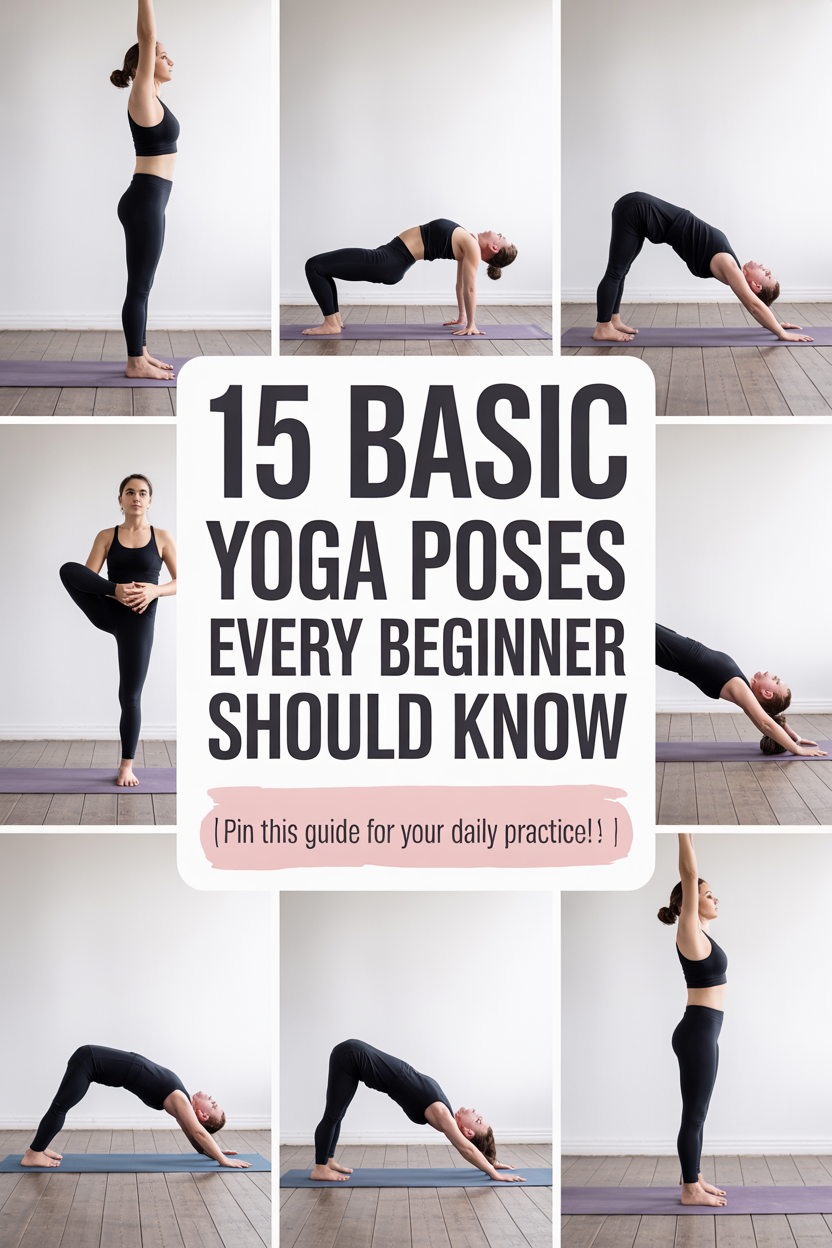Yoga is more than just stretching or holding poses; it’s a transformative practice that harmonizes the body, mind, and breath. If you’re new to yoga, starting with the right foundation is essential. That’s why we’ve curated this guide to the 15 basic yoga poses for beginners—each chosen to help you build strength, improve flexibility, and foster mindfulness in a safe and approachable way.
Whether you’re practicing at home or stepping onto a studio mat for the first time, these beginner-friendly poses are simple, realistic, and perfect for every body type. No acrobatics or extreme flexibility needed—just an open mind and willingness to explore.
✅ Key Facts About Beginner Yoga
- 🧘♂️ Best time to practice: Morning or early evening
- 🕒 Recommended duration: 15–30 minutes daily for noticeable results
- 🌱 Best for beginners: Focus on foundational poses with proper breathing
- ⚠️ Caution: Always listen to your body—never force a pose
🧘 15 Basic Yoga Poses for Beginners
Below are 15 fundamental yoga poses that are accessible to most beginners. Each pose includes a description, benefits, and helpful tips.
1. Mountain Pose (Tadasana)
How to Do It:
Stand tall with feet together, arms by your sides, and palms facing forward. Engage your thighs, draw your belly in, and lift your chest.
Benefits:
- Improves posture
- Builds body awareness
- Sets the tone for practice
Tip: Close your eyes and focus on your breath for added grounding.
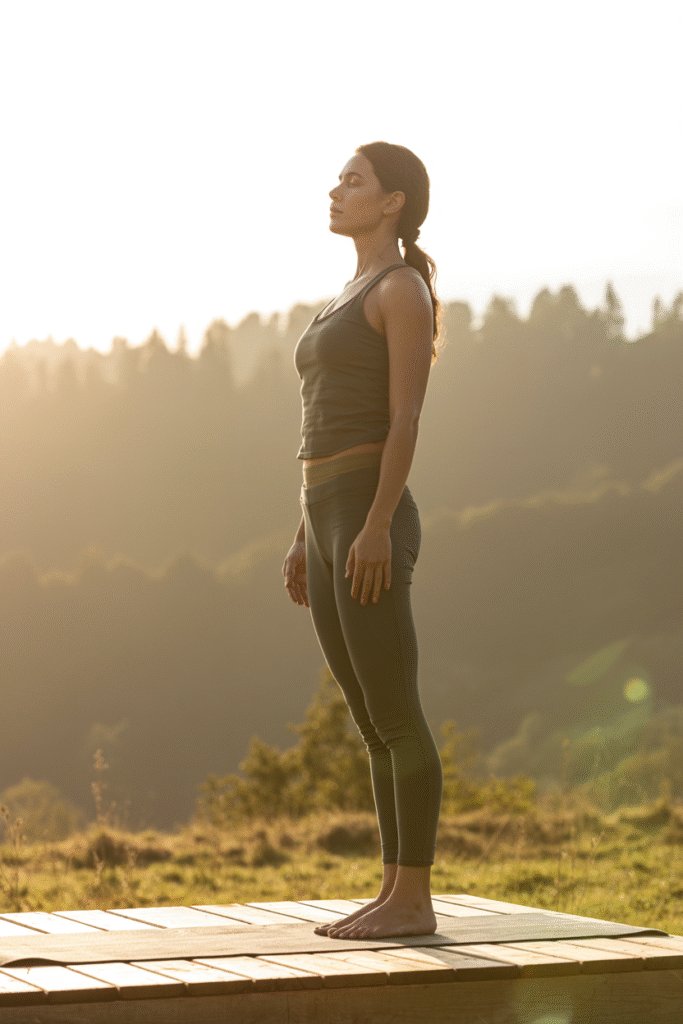
2. Downward-Facing Dog (Adho Mukha Svanasana)
How to Do It:
Start on hands and knees, tuck your toes, and lift your hips toward the ceiling, forming an inverted V.
Benefits:
- Stretches hamstrings and spine
- Builds upper body strength
- Energizes the body
Tip: Keep your knees slightly bent if your hamstrings are tight.
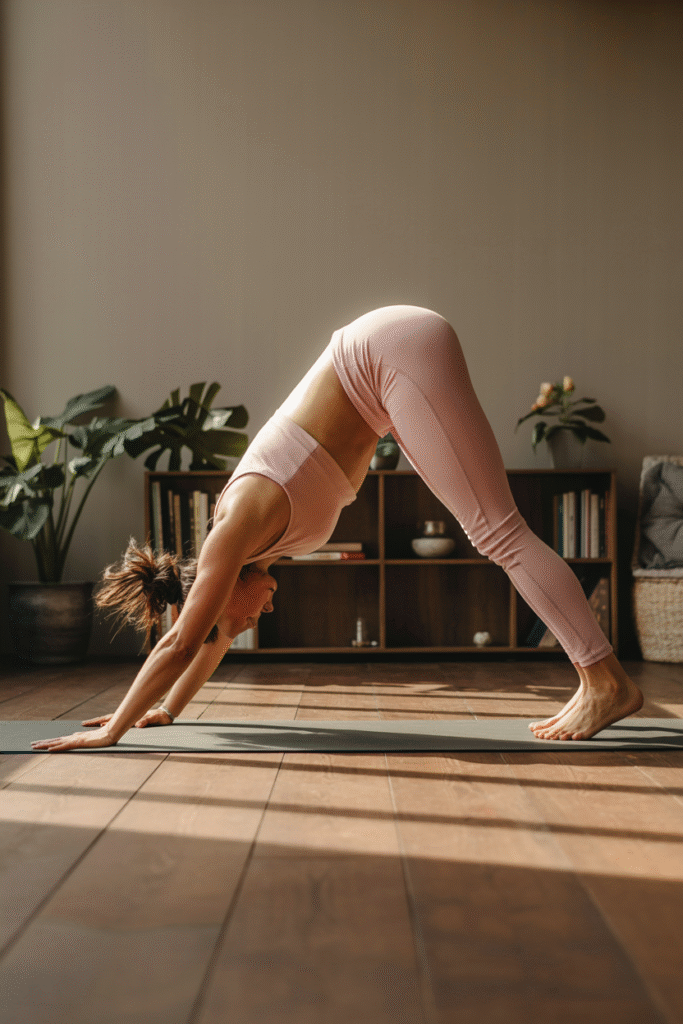
3. Child’s Pose (Balasana)
How to Do It:
Sit on your heels, lower your torso forward, and rest your forehead on the mat with arms extended.
Benefits:
- Relieves stress and tension
- Gently stretches the back and hips
- Restorative and calming
Tip: Use a pillow under your torso for extra support.
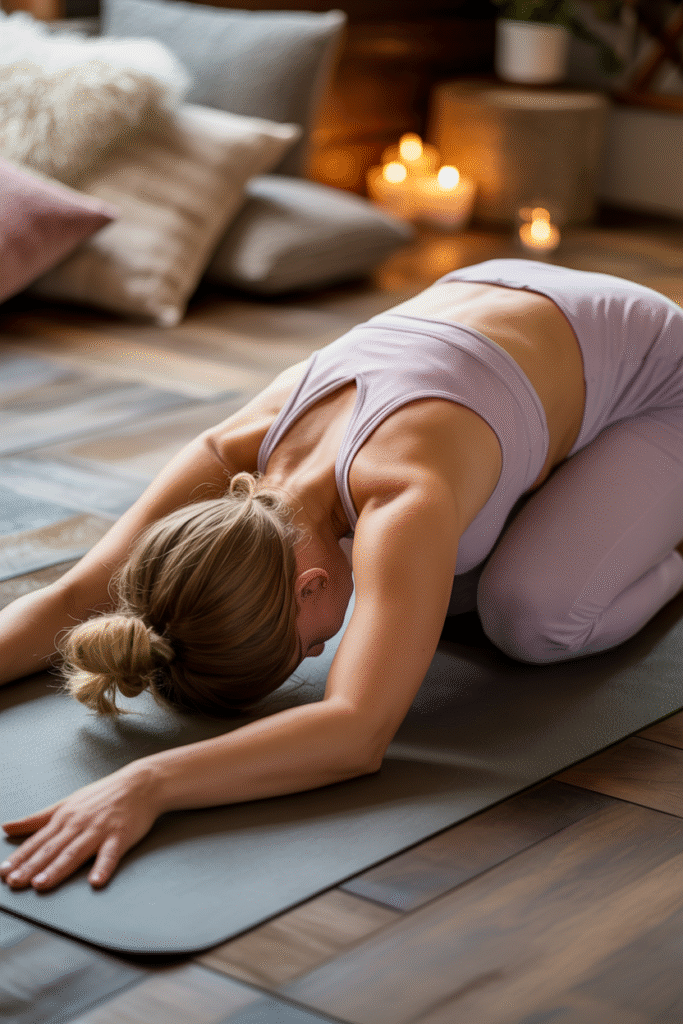
4. Cat-Cow Stretch (Marjaryasana-Bitilasana)
How to Do It:
From tabletop position, inhale to arch your back (cow), exhale to round your spine (cat).
Benefits:
- Increases spine flexibility
- Warms up the body
- Aids in digestion
Tip: Sync your movements with slow, steady breathing.
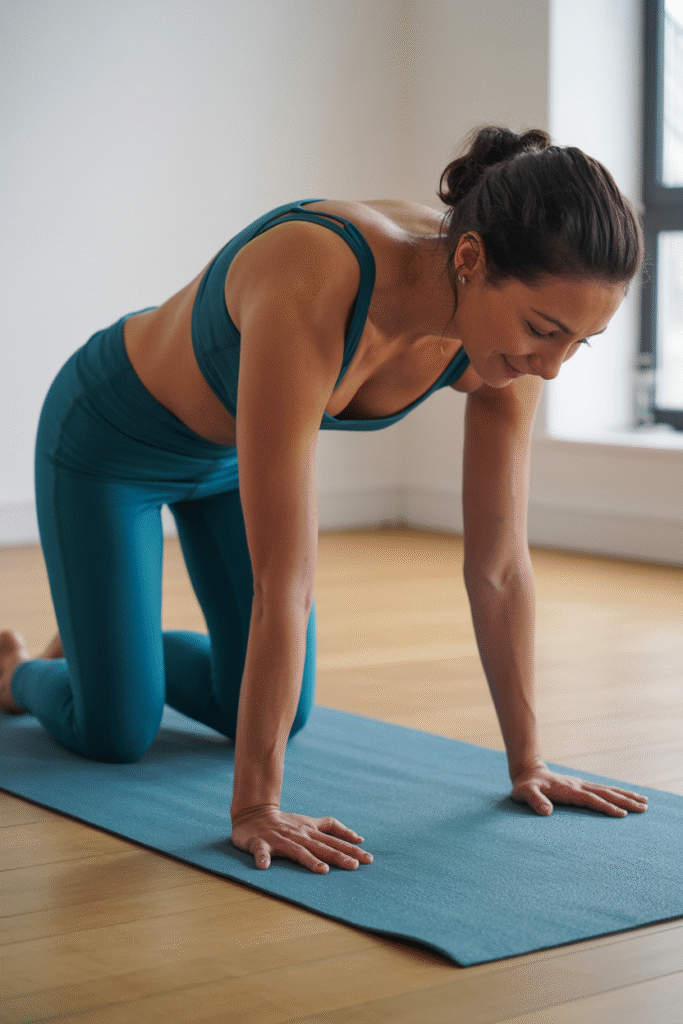
5. Cobra Pose (Bhujangasana)
How to Do It:
Lie face down, place hands under shoulders, and lift your chest using back strength.
Benefits:
- Strengthens spine
- Opens chest and lungs
- Boosts energy
Tip: Keep elbows close to your body and shoulders away from ears.
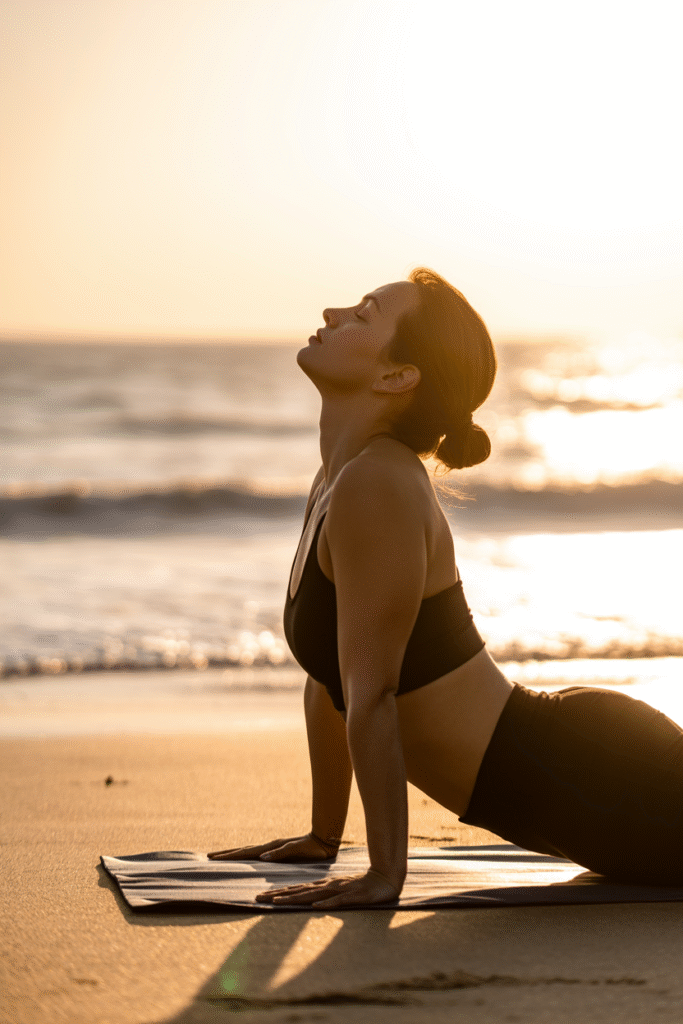
6. Seated Forward Fold (Paschimottanasana)
How to Do It:
Sit with legs extended, inhale to lengthen spine, and exhale to fold forward over your legs.
Benefits:
- Stretches hamstrings and spine
- Calms the nervous system
- Improves digestion
Tip: Bend your knees slightly if needed for comfort.
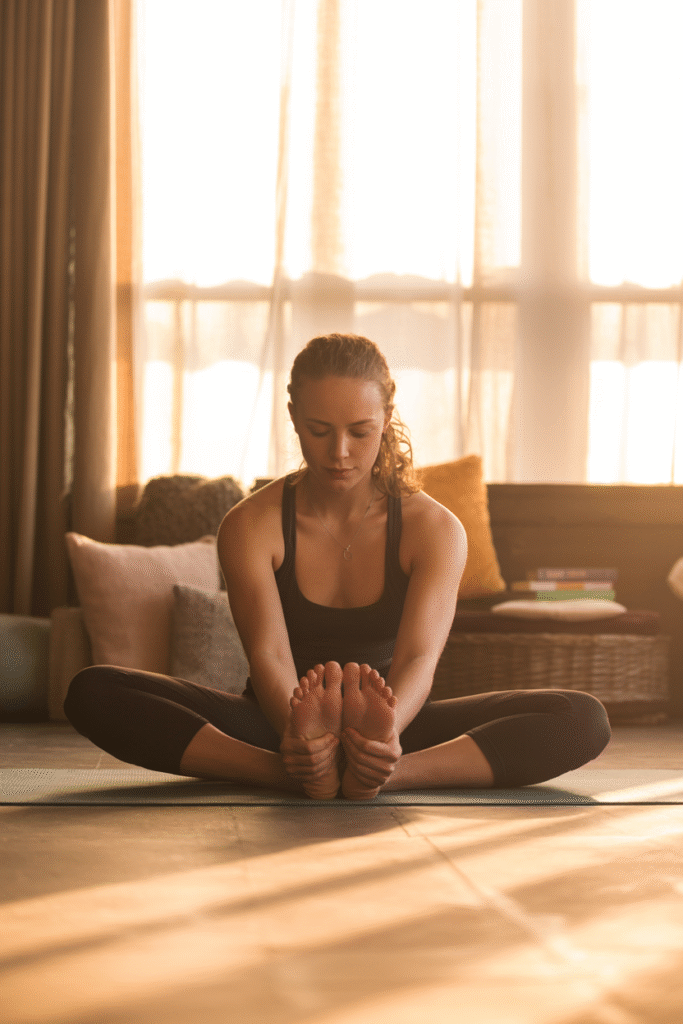
7. Bridge Pose (Setu Bandhasana)
How to Do It:
Lie on your back, bend knees, place feet hip-width apart, and lift hips toward the sky.
Benefits:
- Strengthens glutes and lower back
- Opens chest and shoulders
- Improves circulation
Tip: Keep thighs parallel and avoid turning knees outward.
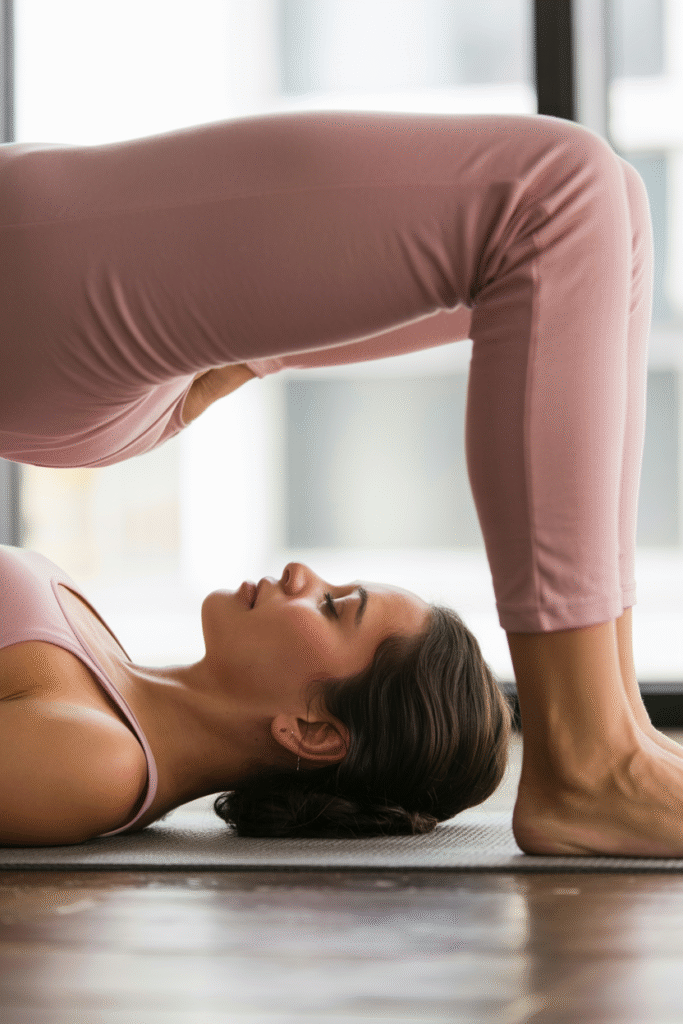
8. Warrior I (Virabhadrasana I)
How to Do It:
Step one foot forward into a lunge, back foot at a 45-degree angle, raise arms overhead.
Benefits:
- Builds strength and stamina
- Stretches hips and thighs
- Increases balance
Tip: Square your hips forward to deepen the stretch.
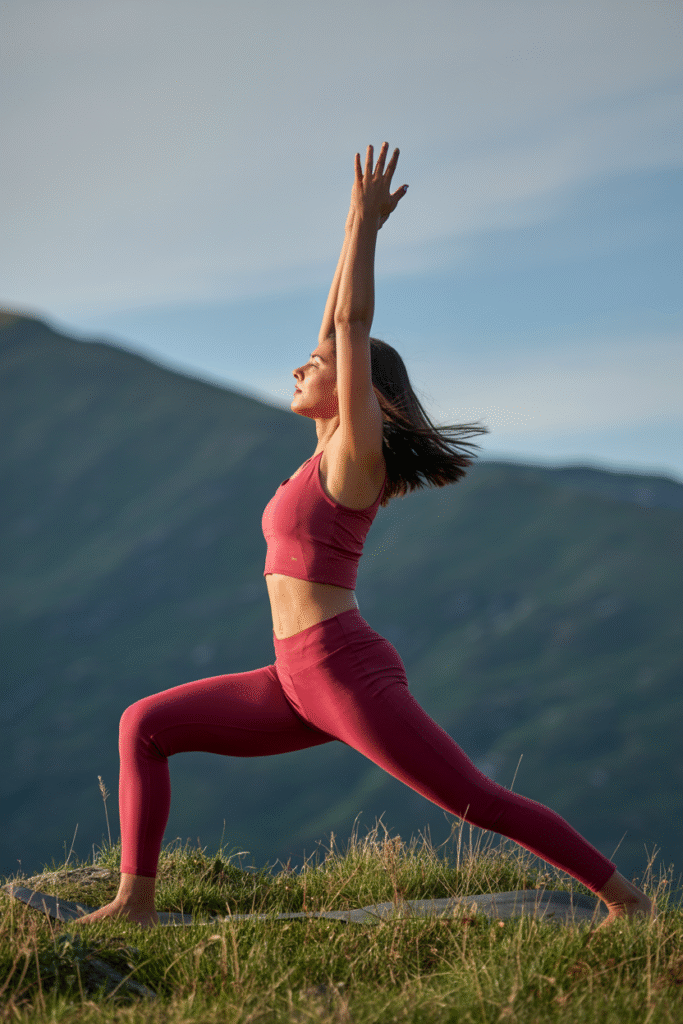
9. Warrior II (Virabhadrasana II)
How to Do It:
From Warrior I, open your hips and arms to face the side, gaze over front fingertips.
Benefits:
- Enhances stamina
- Strengthens legs and shoulders
- Promotes focus
Tip: Keep your front knee directly over the ankle.
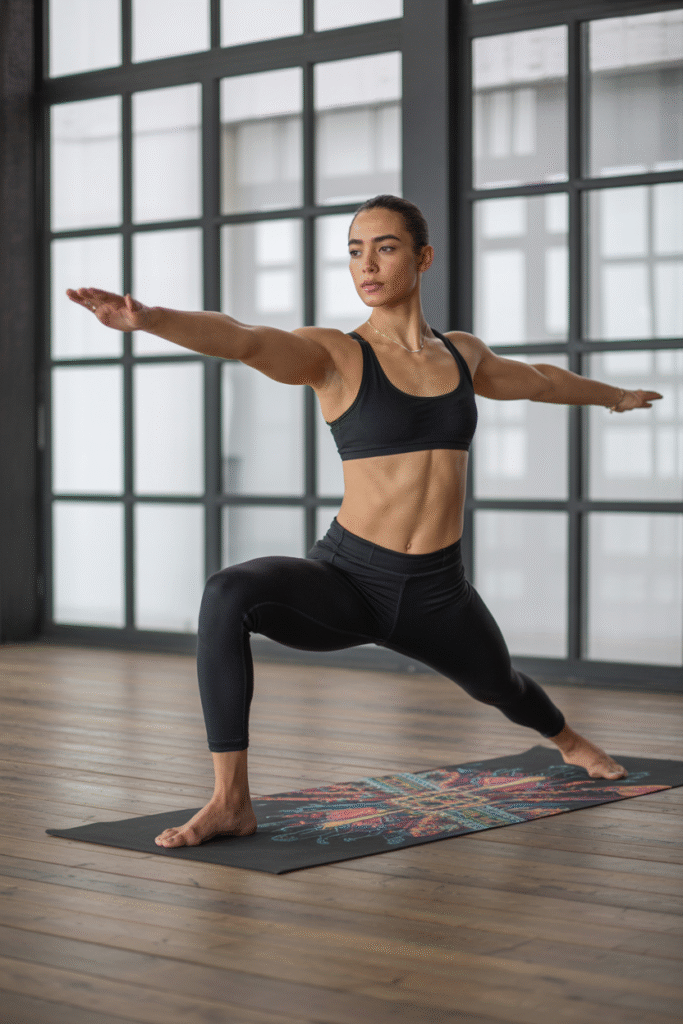
10. Triangle Pose (Trikonasana)
How to Do It:
From Warrior II stance, straighten front leg and reach forward, then lower front hand to shin or floor.
Benefits:
- Lengthens sides of torso
- Stretches hips and hamstrings
- Improves balance
Tip: Use a block if your hand doesn’t comfortably reach the floor.
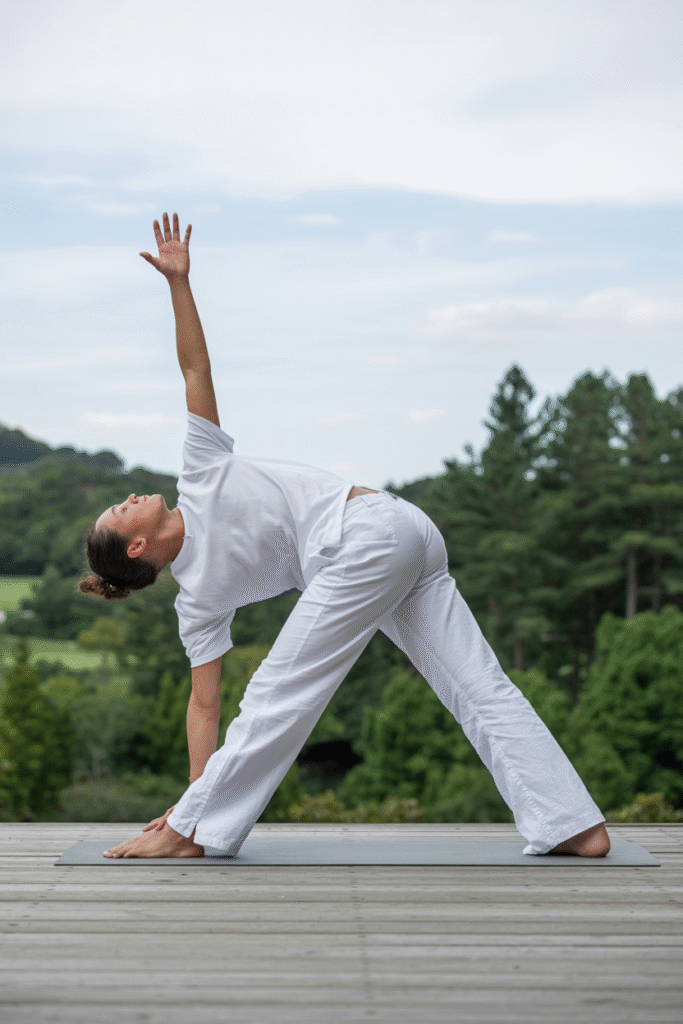
11. Tree Pose (Vrikshasana)
How to Do It:
Stand on one foot, place the sole of the other foot on your inner thigh or calf, and bring palms together at your heart or overhead.
Benefits:
- Improves balance and stability
- Strengthens legs
- Enhances focus
Tip: Fix your gaze on a still point to improve balance.
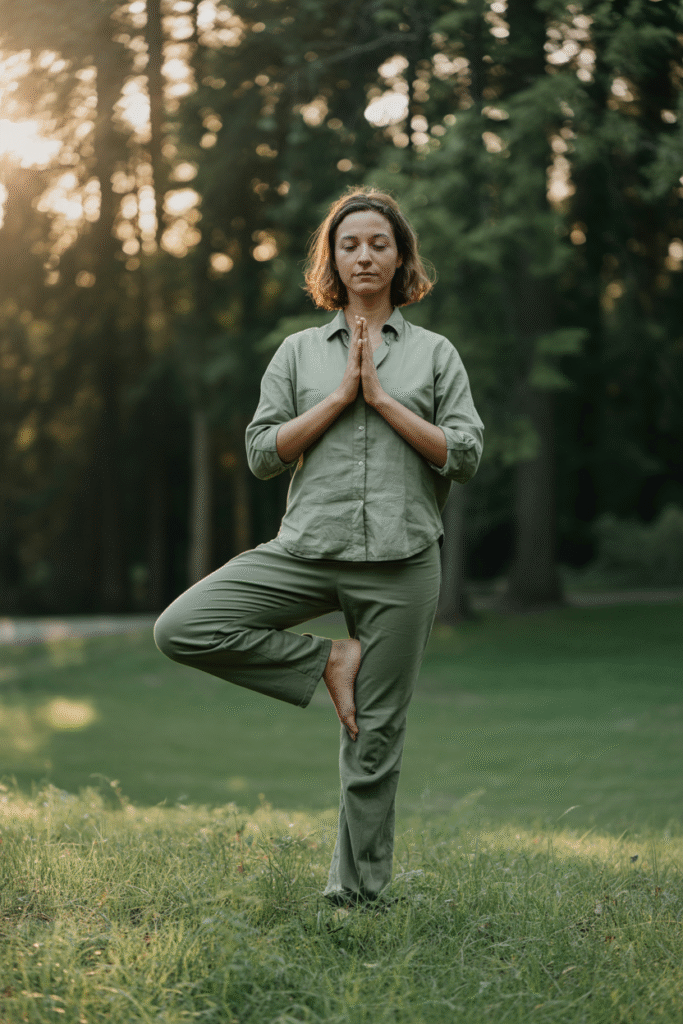
12. Staff Pose (Dandasana)
How to Do It:
Sit with legs straight in front, hands beside hips, and spine upright.
Benefits:
- Improves posture
- Strengthens back muscles
- Prepares body for seated poses
Tip: Sit on a folded blanket if your lower back rounds.
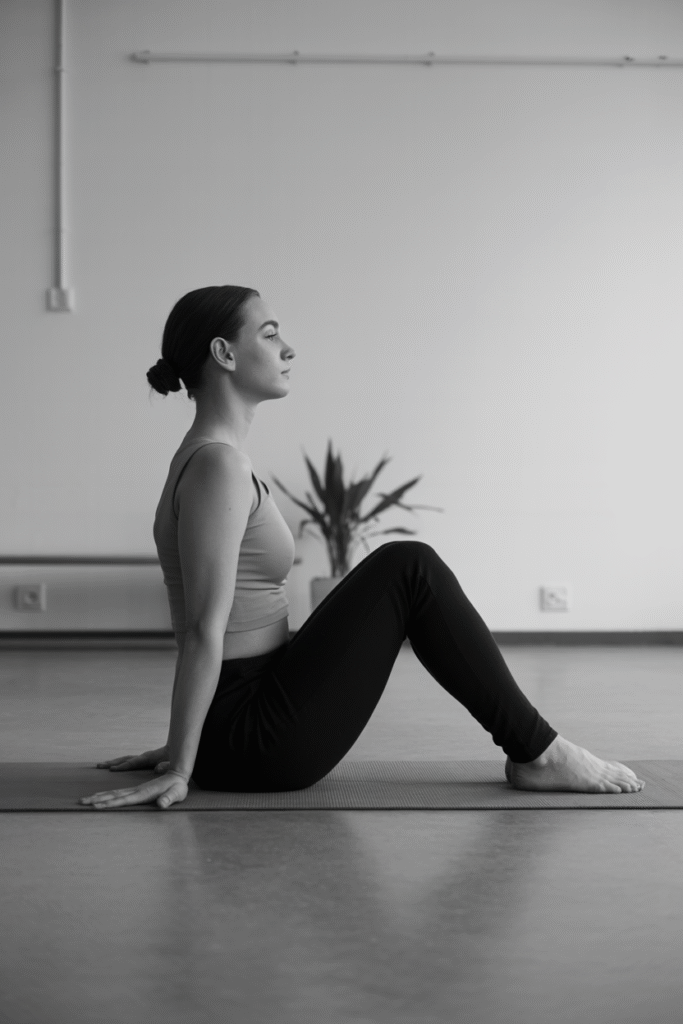
13. Corpse Pose (Savasana)
How to Do It:
Lie flat on your back with arms at sides, palms up, and let your whole body relax.
Benefits:
- Promotes relaxation
- Reduces stress and fatigue
- Integrates practice
Tip: Stay in this pose for at least 5 minutes to let your body absorb the benefits of your practice.
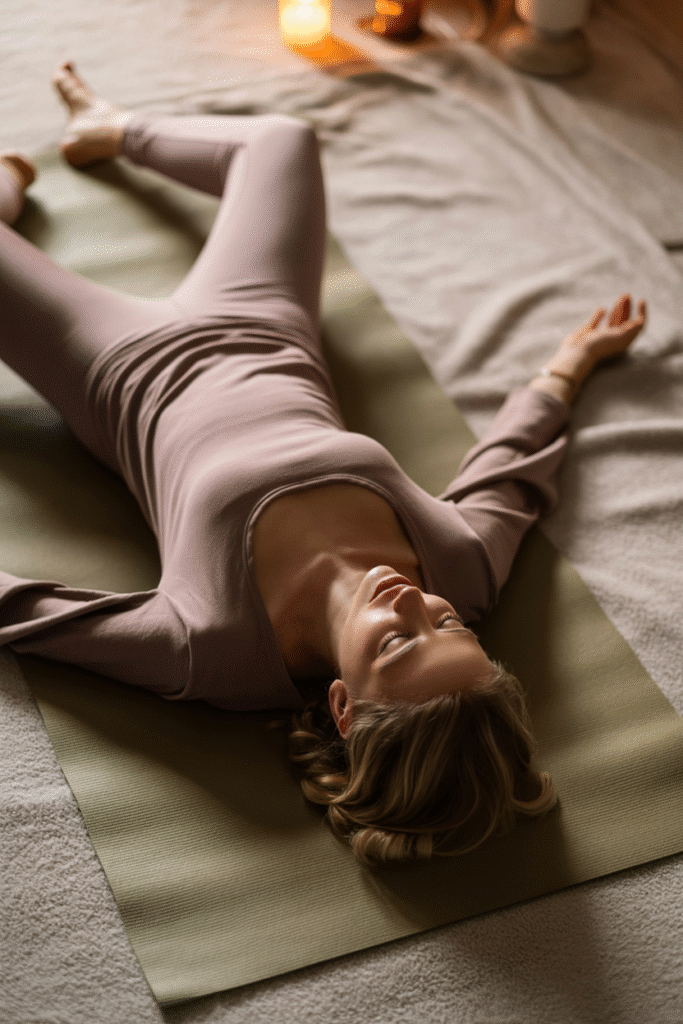
14. Chair Pose (Utkatasana)
How to Do It:
Stand tall, bend knees like you’re sitting in a chair, arms extended overhead.
Benefits:
- Tones thighs and glutes
- Strengthens core
- Builds stamina
Tip: Keep your chest lifted and knees behind your toes.
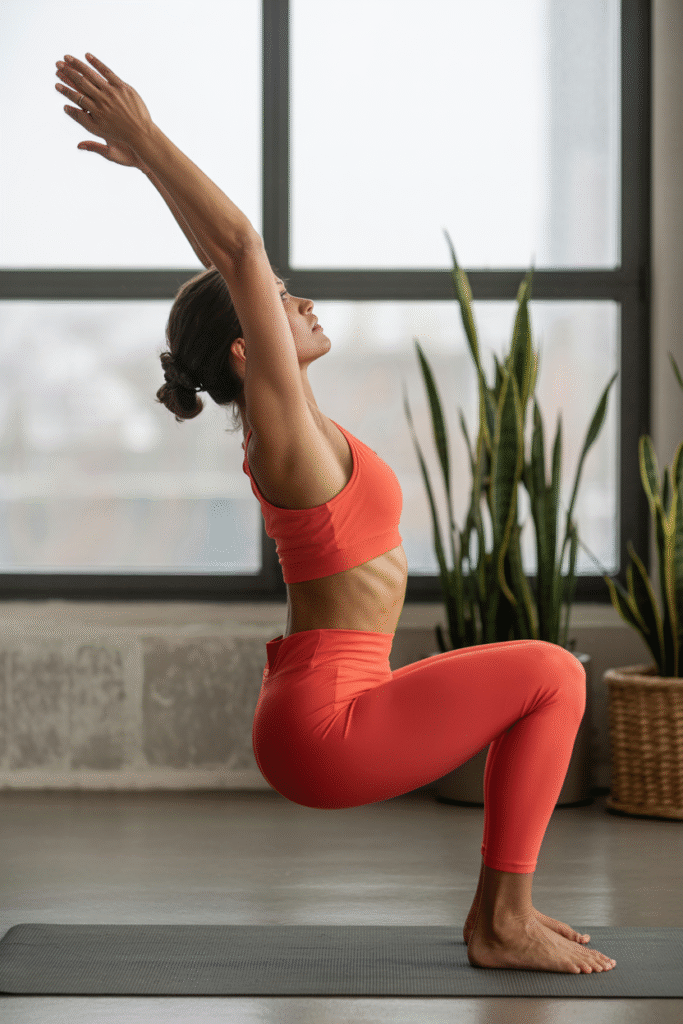
15. Easy Pose (Sukhasana)
How to Do It:
Sit cross-legged on the floor or a cushion, hands resting on knees.
Benefits:
- Calms the mind
- Opens hips
- Ideal for meditation and breathwork
Tip: Elevate your hips with a cushion if your knees are higher than your hips.
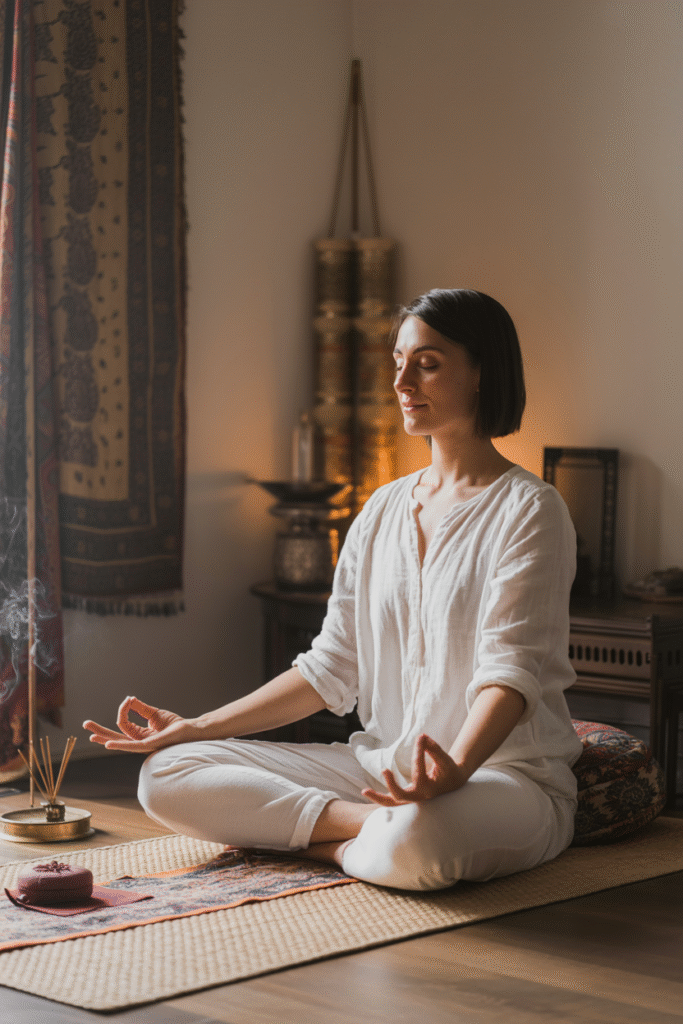
🙋♀️ Frequently Asked Questions
Q1: How often should beginners practice yoga?
A: Aim for at least 3 sessions per week. Even 10–20 minutes daily can be beneficial for consistency and progress.
Q2: Do I need to be flexible to start yoga?
A: Absolutely not! Flexibility improves with regular practice. Yoga is for becoming flexible, not starting that way.
Q3: Is yoga safe for people with back pain?
A: Gentle poses like Cat-Cow, Child’s Pose, and Savasana are often safe and helpful. However, consult a healthcare provider first.
Q4: Can I lose weight with yoga?
A: While yoga isn’t a high-calorie burner, it supports weight loss through mindfulness, reduced stress, and muscle toning—especially when combined with a healthy diet.
Q5: What should I wear for yoga?
A: Comfortable, stretchable clothing that allows free movement. Avoid anything too loose that may get in the way during poses.
🧘 Final Thoughts: Start Slow, Stay Consistent
Practicing these yoga poses for beginners can set you on a fulfilling path toward better health, mental clarity, and inner peace. Don’t worry about getting every pose perfect; yoga is about progress, not perfection. The key is to show up consistently, breathe deeply, and move with intention.
Remember, your yoga journey is personal—listen to your body, take breaks when needed, and enjoy the process of growing stronger, calmer, and more balanced, one breath at a time.


